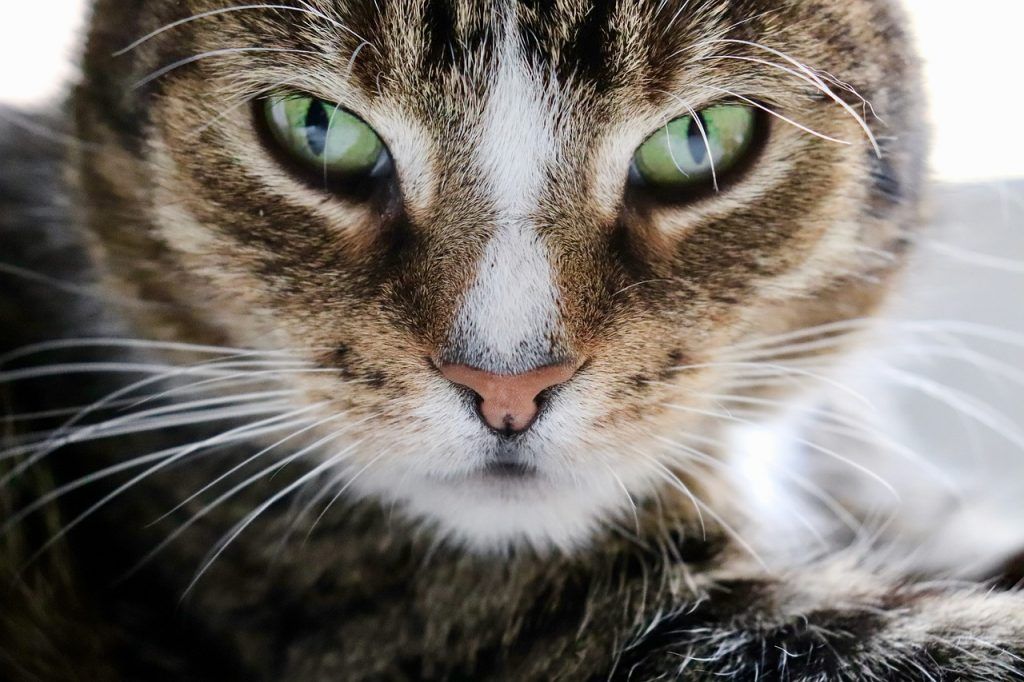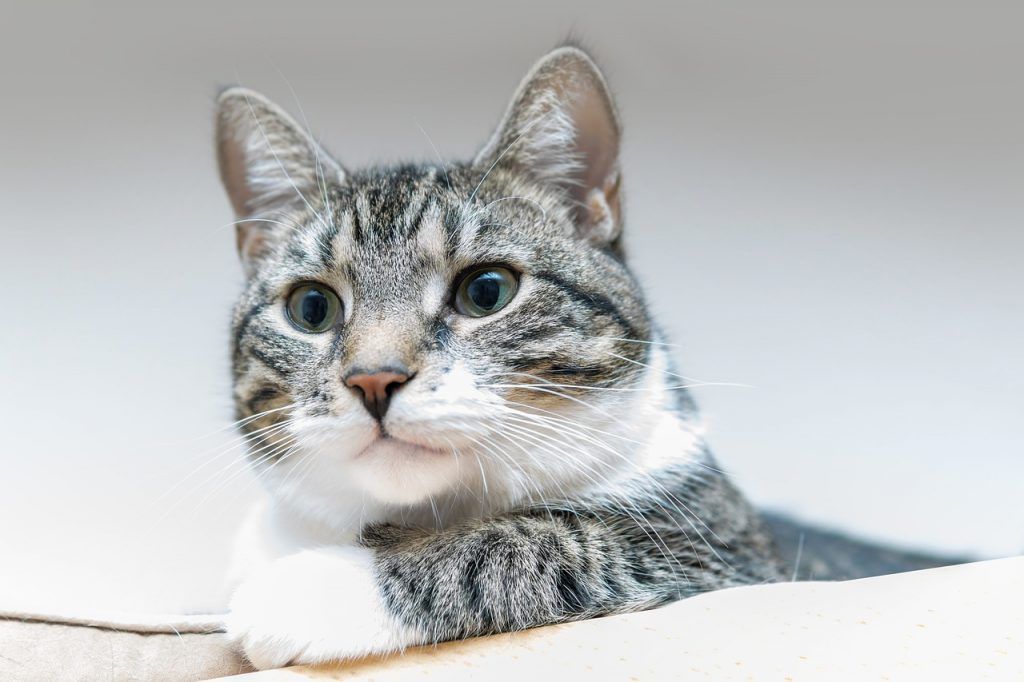This breed is said to be the “original” housecat of Europe, with a history that dates back to ancient Rome. The European Shorthair is a medium-sized cat with a short, thick coat that comes in a variety of colors and patterns. They have calm and dependable personalities, and they get along well with children, other pets, and strangers. They are also playful and loyal, and they love to please their owners. In this article, we’ll tell you everything you need to know about the European Shorthair cat breed, including their history, size, personality, health, grooming, diet, and more.
| Personality | Calm, dependable, independent, friendly |
|---|---|
| Weight | 8-15 pounds |
| Length | 12-16 inches |
| Coat length | Short |
| Coat colors | white, black, red, blue and cream, silver or white markings |
| Coat patterns | Solid, tabby striped, spotted or ticked; tortoiseshell, bi-colored |
| Eye color | Blue, amber, green or heterochromatic |
| Lifespan | 15-20 years |
| Hypoallergenic | No |
| Origin | Ancient Rome |
| Good with kids | Yes |
| Good with other pets | Yes |
History and Origin of the European Shorthair Cat
The European Shorthair cat breed originated from the domestic cats that were brought by the Roman legions to different parts of Europe. These cats were valued for their hunting skills and their ability to keep rodents and other pests away from the camps and settlements. As the cats spread throughout Europe, they adapted to different climates and environments and developed various coat colors and patterns. They also interbred with local wildcats and other domestic cats, creating a diverse gene pool.

The European Shorthair was not recognized as a distinct breed until the 20th century. In Sweden, breeders started to select cats that resembled the typical domestic cats of Europe, with a slightly wild appearance and a robust body. They wanted to preserve the natural beauty and health of these cats without introducing any foreign or exotic influences. They called them European Shorthairs or simply Europeans.
The European Shorthair was recognized by FIFe (Fédération Internationale Féline) in 1982 and by WCF (World Cat Federation) in 1992. The breed is also known as Celtic Shorthair in some countries, but this name is now reserved for a separate breed that has a longer coat. The European Shorthair is common and popular in most of Europe, especially in Scandinavia (It’s the national cat of Finland after all), but rare in other parts of the world. In Sweden it is actually listed on an endangered breeds list.
Size
The European Shorthair is a medium-sized cat with a muscular and well-balanced body. They have a large head with a straight nose and a firm chin and cheeks. Their ears are medium-sized and slightly rounded at the tips. Their eyes are round and expressive and can be blue, amber, green, or odd-eyed (one blue and one amber). Their tail is medium-long and tapered at the end.
The average weight range for the European Shorthair is 8 to 15 pounds. Males are usually larger than females. The size of the European Shorthair can vary depending on the region and the breeding line. They are generally smaller than their close cousins, the British Shorthair and the American Shorthair.
Personality and Temperament
The European Shorthair is a calm, dependable cat that adapts easily to new situations and environments. They are not very demanding or vocal, but they enjoy attention and affection from their owners. They are loyal and devoted companions that will follow you around as a faithful house cat and curl up on your lap or beside you on the sofa.
The European Shorthair is also friendly and sociable with other people and animals. They get along well with children of all ages as long as they are treated gently and respectfully. They can also coexist peacefully with other cats, dogs, and various pets as long as they are introduced properly and have their own space. However, they may be territorial or dominant with other cats of the same sex or breed.
The European Shorthair is playful and curious throughout their life. They like to chase toys, explore their surroundings, and exercise their hunting instincts. They are not very active or energetic, but they appreciate some daily playtime with their owners or other pets. They are also intelligent and trainable, and they can learn tricks or commands if motivated by praise or treats.
The European Shorthair is not prone to any major behavioral problems or challenges. However, they may become bored or lonely if left alone for too long or ignored by their owners. They may also develop bad habits such as scratching furniture or overeating if they are not provided with enough stimulation or proper care.

Common Health Issues
The European Shorthair is a healthy and hardy cat that has a long lifespan of 15 to 20 years on average. They have a strong immune system and a good resistance to diseases. However, like any other cat breed, they may be susceptible to some health issues or conditions that may affect their quality of life or longevity. Some of the common health problems that may affect this breed are:
– Dental problems: The European Shorthair may be prone to dental issues such as gingivitis, periodontitis, or tooth decay. These can cause pain, infection, tooth loss, or systemic diseases. To prevent or treat dental problems, owners should brush their cat’s teeth regularly, provide them with dental treats or toys, and take them to the vet for dental check-ups and cleaning.
– Urinary tract infections: The European Shorthair may be at risk of developing urinary tract infections (UTIs) due to bacteria, stones, crystals, or other factors. These can cause symptoms such as difficulty or pain in urinating, blood in urine, increased thirst or urination, or inappropriate elimination. To prevent or treat UTIs, owners should provide their cats with fresh water, a clean litter box, a high-quality diet, and regular vet visits.
– Hypertrophic cardiomyopathy: The European Shorthair may inherit a genetic condition called hypertrophic cardiomyopathy (HCM), which causes the heart muscle to thicken and impair its function. This can lead to heart failure, blood clots, or sudden death. Symptoms may include lethargy, breathing difficulties, fainting, or collapse. There is no cure for HCM, but medication and lifestyle changes can help manage the condition and improve the cat’s quality of life.
– Polycystic kidney disease: The European Shorthair may carry a gene that causes polycystic kidney disease (PKD), which causes cysts or fluid-filled holes to develop in the kidneys and impair their function. This can lead to kidney failure, high blood pressure, or other complications. Symptoms may include weight loss, vomiting, increased thirst or urination, or loss of appetite. There is no cure for PKD, but medication and dietary changes can help slow down the progression of the disease and alleviate the symptoms.
– Other issues: The European Shorthair may also be affected by other issues such as allergies, obesity, parasites, infections, or injuries. Owners should monitor their cat’s health and behavior regularly and consult their vet if they notice any signs of illness or distress.
Coat Color and Grooming
The European Shorthair has a short, straight, thick coat that is easy to groom and maintain. They shed moderately throughout the year and more heavily during seasonal changes. Owners should brush their cat’s coat once or twice a week to remove loose hair, dirt, and debris and distribute natural oils. They should also trim their cat’s nails every few weeks, clean their ears and eyes as needed, and brush their teeth daily or at least weekly.
The European Shorthair comes in a wide variety of colors and patterns that make them stand out from other breeds. They can be solid black, white, blue, red, cream, or lilac; tabby striped, spotted, or ticked in various shades; tortoiseshell black and red or blue-and-cream; or bi-colored with white patches on any of the above colors. Their coat color may also influence their eye color, which can be blue, amber, green, or odd-eyed (one blue and one amber).
Diet and Nutrition
The European Shorthair requires a high-quality diet that meets their nutritional needs and preferences. They need a high-protein diet that contains real meat or fish as the main ingredient and provides them with essential amino acids such as taurine. They also need a moderate amount of fat for energy and skin health, carbohydrates for digestion and fiber, vitamins and minerals for the immune system and overall health, and water for hydration.
Owners should feed their cats according to their age, weight, activity level, and health condition. They should also monitor their cat’s food intake and weight regularly to prevent obesity and related health problems. They should provide their cat with fresh water at all times and avoid giving them human food, milk, or other treats that may cause digestive upset or allergies.
Some treats, supplements, or special foods that may benefit the European Shorthair’s health or well-being are:
– Dental treats or toys that help clean their teeth and prevent plaque and tartar buildup
– Hairball remedies that help prevent or eliminate hairballs that may cause vomiting or intestinal blockage
– Omega-3 fatty acids that help reduce inflammation and support skin and coat health
– Probiotics that help balance the gut flora and improve digestion
– Antioxidants that help protect against oxidative stress and aging

Pros and Cons
The European Shorthair cat breed has a few advantages and disadvantages that potential owners should consider before adopting or buying one. Here are some of the pros and cons of owning a European Shorthair cat:
Pros:
- They are friendly, adaptable, and easy to care for, adjusting to different lifestyles and environments.
- They are loyal, devoted, and affectionate.
- They are healthy and hardy. They have a long lifespan and a strong immune system.
Cons:
- They may be territorial or dominant.
- They may become bored or lonely, which may cause bad habits to develop.
Where to Adopt or Buy
If you are interested in adopting or buying a European Shorthair cat, you should look for reputable sources that can provide you with healthy and well-socialized cats. Some of the sources where you can find a European Shorthair cat are:
- Shelters: You can check your local shelters or rescue groups for European Shorthair cats needing a new home. You can also search online platforms such as Petfinder or Adopt-a-Pet for available cats in your area. Adopting a cat from a shelter is a great way to save a life and support animal welfare.
- Breeders: You can look for reputable breeders that specialize in European Shorthair cats. You can search online directories such as FIFe or WCF for registered breeders in your region. You can also ask for referrals from other owners, vets, or cat clubs. Buying a cat from a breeder is a good way to ensure the quality and health of the cat, as well as to learn more about its history and pedigree.
- Online: You can also find European Shorthair cats for sale online through websites such as Craigslist or Facebook Marketplace. However, you should be very careful and cautious when buying a cat online, as there may be scammers or unethical sellers that may harm or exploit the cat or its owner. You should always do your research, ask for proof of identity and health records, and meet the seller and the cat in person before making any transactions.
The average price range for a European Shorthair cat is $100 to $500, depending on the source, location, quality, and availability of the cat. However, the price may vary depending on other factors such as age, gender, color, pattern, personality, and health condition of the cat.
More Cat Breeds
If you like the European Shorthair cat breed, you might also be interested in some other cat breeds that have similar characteristics or origins. Some of these breeds are:
– Celtic Shorthair
– British Shorthair
– American Shorthair
If you want to learn more about the European Shorthair cat breed or cats in general, you can check out some reliable resources such as books, websites, or organizations. Some of these resources are:
FAQ
Q: Are European Shorthair Friendly?
A: Yes, European Shorthair cats are friendly, sociable, and affectionate. They enjoy attention and affection from their owners and get along well with children, other pets, and strangers. They are loyal and devoted companions that will follow you around the house and curl up on your lap or beside you on the sofa.
Q: How long do European Shorthairs live?
A: European Shorthair cats have a long lifespan of 15 to 20 years on average. They are healthy and hardy cats that have a strong immune system and a good resistance to diseases. However, they may be susceptible to some health issues or conditions that may affect their quality of life or longevity.
Q: How much is a European Shorthair?
A: The average price range for a European Shorthair cat is $100 to $500, depending on the source, location, quality, and availability of the cat. However, the price may vary depending on other factors such as age, gender, color, pattern, personality, and health condition of the cat.
Q: Are European Shorthairs rare?
A: European Shorthair cats are common in Europe, especially in Scandinavia, but rare in other parts of the world. They are not widely recognized or registered by many cat associations or registries. They are also often confused with other similar breeds or types of cats, such as the British Shorthair, the American Shorthair, or the domestic shorthair.
Q: Where are European Shorthairs from?
A: The European Shorthair cat breed originated from the domestic cats that were brought by the Roman legions to different parts of Europe. These cats were valued for their hunting skills and their ability to keep rodents and other pests away from the camps and settlements. They are considered to be the “original” housecat of Europe.
























